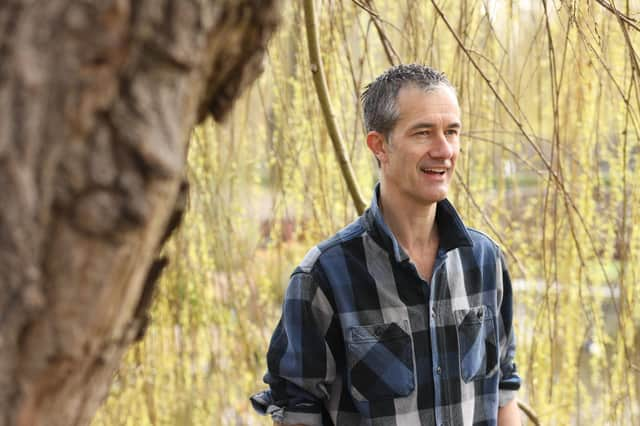Book review: See / Saw: Looking At Photographs, by Geoff Dyer


There is something delightfully disconcerting about the non-fiction work of Geoff Dyer. The books seems like a very amiable and intelligent conversation; all the more so with a book like See / Saw, where Dyer writes about photography (again) and makes the reader flip back and forth between the text and the image, making the whole experience a kind of dialogue. He is exceptionally genial company, and the musings move away from the photographs to freewheel around geopolitics and pornography, the meaning of statues or jazz, the poetry of WH Auden or the paintings of de Chirico. But for all the conviviality of ideas, an observant interlocutor might notice that all the while, Dyer has been sharpening a pencil while beguiling you. His prose is limpid and witty, and one is left in no doubt that what seemed like divagations and digressions and drifts were artfully crafted.
Dyer is the sort of writer who seems to have earned the right to write about anything. At the outset he puts forward a kind of manifesto – “naturally, I have no method. I just look, and think about what I’m looking at, and then try to articulate what I’ve seen and thought.” He then, of course, admits that “no method claims” can “itself constitute a method.” Even the title, which in some ways reflects the reader’s flicking, reading in a non-linear manner, is also about tense. That “tense” means both the tension and the way in which we express time, an issue which rises continually throughout the essays.
Advertisement
Hide AdI should confess that I knew very few of the 48 photographers that Dyer discusses, and feel not too shabby about that as Dyer himself beat me to it, describing how he had read about some photographers before ever having seen their work (the final section comprises three essays on writing about photography, dealing with Roland Barthes, Michael Fried and John Berger). There is a nice grace note that the final photograph in a tome which mostly eschews portraiture is of Dyer in conversation with Berger. No jacket photo, I noted, but a kind of epilogue epigraph. It is testament to the work’s intellectual fizz that the last picture, uncommented upon, is one that the reader will decode and decipher. Not having known the works of most of the photographers beforehand is almost a blessing, in that it trains the reader in looking intently and perhaps even naively. Time and again I went back to the pictures and thought “But why, Geoff, did you not mention that?”
Dyer is not merely a fine prose stylist but a writer of knowingly stylish prose. He begins the book by talking about his non-method method as being akin to what as undergraduates we called practical criticism; a concentration on the text itself and not on the context or history or manuscript tradition. In that vein, I would say that I could open this book on any single page and find examples of clever alliteration, assonance, rhetorical flourish and little tourniquets of grammar. So – page 201 – on Dayanita Singh – “the effect of these is to make the other half, the empty interiors, seem… even emptier!” and there is “a redoubled, much-multiplied emptiness: unworn clothes hanging on the unopened doors of empty rooms… this is what time looks like when history has moved on and left it for dead.” The fourfold “empty” is flamboyant enough, but being able to use an exclamation mark unironically is a hard-won gift. To yoke that to a gnomic piece of wisdom is remarkable.
There is a paradox at the heart of this book, captured by its subtitle. Looking implies an ongoing action but the images are literally fixed and static. In the first essay, on Eugène Atget, about whom I knew nothing, Dyer sets the tone: “the photographer identified by his absence, producing pictures in which people are everywhere suggested by their absence.” The last “encounter” piece ends thinking about “what is left is what we see here: dead time”, a showing of “what was lost – and what remains of that loss.” It seems that is why there are so few pieces on faces, and one of the best parts is on Pavel Maria Smekjal’s Fatescaptes, where erosion of details from other photographs is the key point. It is, as Dyer says of Warhol, that in these images “a vacuum emanates from and converges on it. Everything about the picture – its stillness, its emptiness, its claustrophobic silence – urges one to comment on the corresponding absence of time.”
But photographs do change. Dyer chides himself for overuse of “elegy” at one point. I have no technical skill with photography, but am deeply fond of some old family snaps. I think I actually like the fading colour photographs from the 70s and 80s more – those dead relatives gradually transcending into pure blue. The black and white ones are frankly just scary.
This is both a beautifully written and a beautiful book. An old friend once offered the sage advice that one should always review non-fiction, because even if the book is bad, you will still learn something, but all you learn from a bad novel is how bad a novel can be. This is not in any sense a bad book. But it is a melancholy one.
See / Saw: Looking At Photographs, by Geoff Dyer, Canongate, £25
A message from the Editor:
Advertisement
Hide AdThank you for reading this article. We're more reliant on your support than ever as the shift in consumer habits brought about by coronavirus impacts our advertisers.
If you haven't already, please consider supporting our trusted, fact-checked journalism by taking out a digital subscription at https://www.scotsman.com/subscriptions